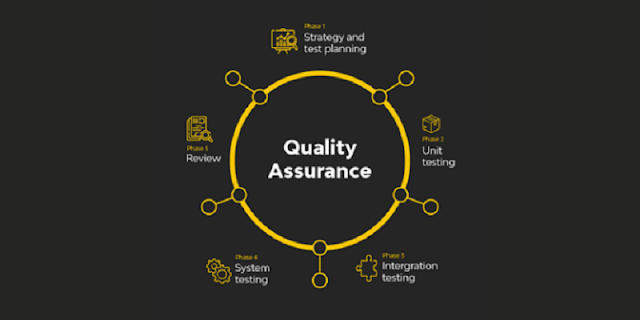Find out about the historical backdrop of Quality assurance, why it's significant, and how the International Organization for Standardization endeavors to apply quality assurance norms around the world.
What Is Quality Assurance?
Quality assurance incorporates the cycles and techniques that efficiently screen various parts of help or office. Through reviews and different types of appraisal, quality assurance endeavors distinguish and right issues or fluctuations that fall outside set up norms or prerequisites.
As such, quality assurance guarantees a significant degree of value during the advancement of items or administrations.
The expression "Quality Assurance in Software Testing" is now and again utilized reciprocally with "quality control," another feature of the administration cycle. Nonetheless, quality control relates to the genuine satisfaction of whatever quality prerequisites have been set up. Quality confirmation is monitoring quality control strategies to guarantee they're functioning as arranged.
Most organizations use some type of value confirmation underway, from makers of shopper bundled merchandise to software development organizations. A few organizations may even set up a quality confirmation division with representatives that attention exclusively to quality assurance.
How Quality Assurance Works
Quality Assurance Solution techniques center around building up great cycles to deliver items with the quality previously implicit, as opposed to going through an unmonitored creation interaction and attempting to "review the quality" of an item that is now been done.
Ideas of value control can be followed back to in any event the medieval times and the ascent of societies. An expert could get to an organization of associations with other specialists and providers by joining a social association. He could then profit by the standing of the organization dependent on guidelines of value in the items delivered by its individuals.
The Industrial Revolution achieved more specialization in labor, just as automation. Quality assurance was developed to address specific assignments performed by laborers. With the presentation of large-scale manufacturing, the need to screen the nature of segments being delivered by huge quantities of laborers made a part for quality investigators.
Current Approaches
The present ways to deal with quality assurance may contrast contingent upon the business. For instance, a clinic may carry out QA strategies to improve the nature of medical services. This could incorporate characterizing quality by understanding center exercises in powerful tolerant consideration, setting quality benchmarks, and estimating quality with reviews, previews, and management.
Another business, like a dietary enhancement producer, would have various techniques to guarantee the quality since its item boundaries are not quite the same as a medical clinic. For instance, the enhancement organization may direct its cycle dependent on rules for dynamic drug fixings.
Global Quality Assurance Standards
The International Organization for Standardization (ISO) was established in 1947 fully intent on guaranteeing quality across public lines. ISO comprises of norms associations that address more than 160 nations. It keeps a compelling quality assurance system for assembling and administration enterprises.
One result of the ISO is the arrangement of principles that have gotten known as the ISO 9000 family. The model's nitty-gritty in these management systems is intended to help associations meet legal and administrative prerequisites for item quality and shopper needs.
Producers and organizations can get guaranteed by satisfying the necessities characterized in ISO 9001. This offers the autonomous assurance of an association's adherence to quality guidelines. More than 1 million associations throughout the planet are ISO 9001 guaranteed.
To acquire ISO 9001 confirmation, the administration of an association creates Quality Assurance Software objectives that are systematized into approaches and rules. These approaches and rules are explicitly intended to meet the exceptional requirements of its business and assembling cycles, and they're regularly created with the help of a specialist.
When the association executes the rules, the frameworks are evaluated for consistency with ISO 9000 guidelines. The aftereffects of the evaluation distinguish any regions that fall outside of ISO guidelines. On the off chance that the association resolves any trouble spots inside a given period, it gets confirmation.




Comments
Post a Comment